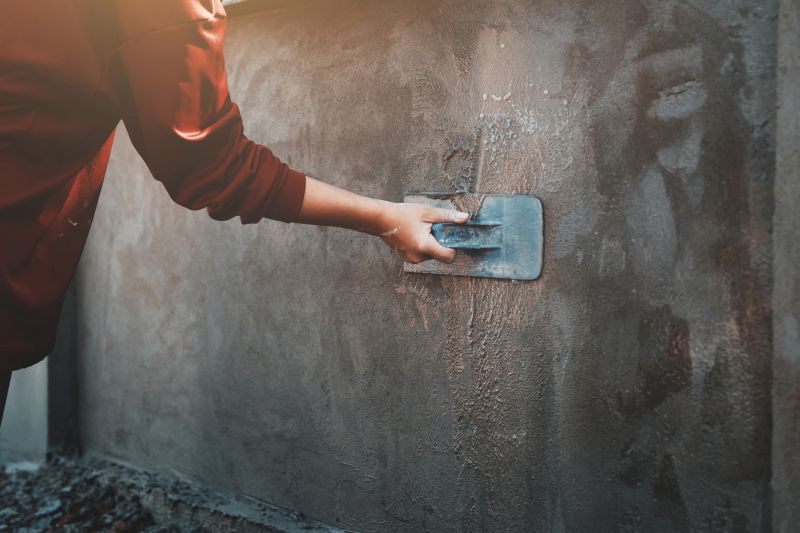Favorite Products for Exterior Wall Plastering Projects
Browse trusted plastering products favored by professionals for creating durable and attractive exterior wall surfaces.
 Exterior wall plastering is a fundamental aspect of building finishing that enhances both the aesthetic appeal and durability of structures. Selecting the right products for plastering can significantly influence the longevity and appearance of exterior walls. These products range from traditional cement-based mixes to modern polymer-modified formulations, each offering unique properties suited for various environmental conditions and design preferences. Proper application and the right product choice can help protect walls from weather elements, reduce maintenance needs, and improve overall building performance.
Exterior wall plastering is a fundamental aspect of building finishing that enhances both the aesthetic appeal and durability of structures. Selecting the right products for plastering can significantly influence the longevity and appearance of exterior walls. These products range from traditional cement-based mixes to modern polymer-modified formulations, each offering unique properties suited for various environmental conditions and design preferences. Proper application and the right product choice can help protect walls from weather elements, reduce maintenance needs, and improve overall building performance.
Top Overall Option
High-Performance Exterior Wall Plaster Mix
This versatile plaster mix combines cement, polymers, and additives to provide a durable, weather-resistant finish suitable for various exterior wall surfaces. It offers ease of application and good adhesion properties, making it a reliable choice for different project scales. Its formulation aims to deliver a consistent finish with reduced cracking and enhanced longevity, suitable for diverse environmental conditions.
Types of Products For Exterior Wall Plasterings
Cement-Based Plaster
Traditional cement mixes used for base coats and finishing layers, offering strength and durability.
Polymer-Modified Plaster
Enhanced formulations with polymers for improved flexibility, adhesion, and weather resistance.
Lime Plaster
Natural material providing breathable finishes and traditional aesthetic appeal.
Acrylic Stucco
Acrylic-based coatings offering textured finishes with good water resistance.
Sand Finish Plaster
Textured plaster with sand aggregates for decorative and slip-resistant surfaces.
Fiberglass Reinforced Plaster
Plaster infused with fiberglass for added crack resistance and durability.
Polyurethane-Based Coatings
Flexible coatings that provide excellent weather resistance and impact protection.
Clay Plaster
Natural clay formulations for eco-friendly and breathable wall finishes.
Acrylic Render
Acrylic renders for smooth or textured finishes with good adhesion properties.
Silicone-Based Plaster
Offers water repellency and flexibility, suitable for challenging weather conditions.
Polymer-Modified Lime Plaster
Combines traditional lime with modern polymers for enhanced performance.
Textured Coatings
Specialized coatings for decorative textures and patterns on exterior walls.
Eco-Friendly Plasters
Natural and sustainable formulations designed for environmentally conscious projects.
Insulating Plaster
Plasters that incorporate insulating materials to improve thermal performance.
Rapid-Set Plaster
Fast-curing formulations suitable for quick project turnaround.
Popular Choices
Widely used for foundational and finishing coats, appreciated for its strength and affordability.
Popular for its improved flexibility and weather resistance, suitable for various climates.
Favored for textured finishes and ease of application, providing a variety of decorative options.
Chosen for its breathability and traditional appearance, often used in restoration projects.
Increased popularity due to its crack resistance and durability in harsh conditions.
Known for excellent water repellency and flexibility, suitable for challenging environments.
Chosen for decorative textured surfaces that add visual interest to exterior walls.
Popular for its smooth or textured finishes with good adhesion and weather resistance.
Selected for natural, breathable finishes that are environmentally friendly.
Favored for decorative exterior finishes with various textures and patterns.
Popular for quick repairs and projects needing fast completion times.
Increasingly used for thermal insulation benefits combined with wall finishing.
Growing in popularity for sustainable building practices and natural finishes.
Often selected for its textured appearance and ease of maintenance.
Valued for impact resistance and weatherproofing properties.
The process often involves multiple layers, starting with a base coat that provides adhesion and structural support, followed by a finishing coat that determines the final texture and appearance. Different products are designed to cater to specific textures, such as smooth, roughcast, or textured finishes, and may include additives to enhance water resistance, flexibility, or adhesion. It is essential to consider the compatibility of these products with existing wall materials and the environmental exposure levels to ensure optimal results.
Innovations in exterior wall plastering products have introduced formulations that are easier to work with, faster to cure, and more resistant to cracking and weathering. These advancements allow for more efficient application processes and longer-lasting finishes. However, selecting the appropriate product requires understanding the specific requirements of the project, including climate conditions, wall substrate, and desired aesthetic outcomes. Proper surface preparation and adherence to manufacturer instructions are critical steps in achieving a durable and visually appealing exterior wall finish.
Overall, the market offers a diverse array of products for exterior wall plastering, each designed to meet different needs and preferences. From traditional cement mixes to advanced polymer-based compounds, the key is to choose a product that aligns with the structural and aesthetic goals of the project while ensuring ease of application and long-term performance.
Key Buying Considerations
- Compatibility with existing wall materials and surfaces
- Environmental exposure levels such as rain, sun, and temperature fluctuations
- Desired aesthetic finish and texture options
- Ease of application and working time
- Durability and resistance to cracking or weathering
- Waterproofing and moisture resistance features
- Flexibility and adhesion properties for movement or substrate variation
- Curing time and project timelines
- Cost and availability of products
- Compatibility with insulation or additional wall systems
- Environmental and health safety standards
- Maintenance requirements and long-term performance
- Application methods suited for your skills or professional use
- Compatibility with decorative finishes or paints
- Presence of additives for specific performance enhancements
